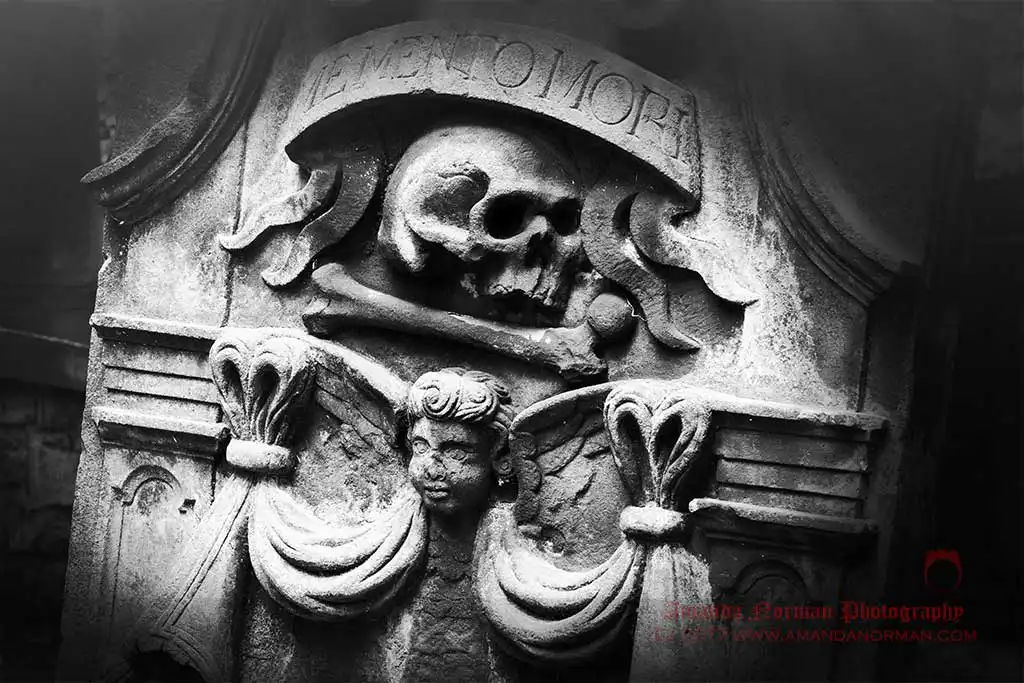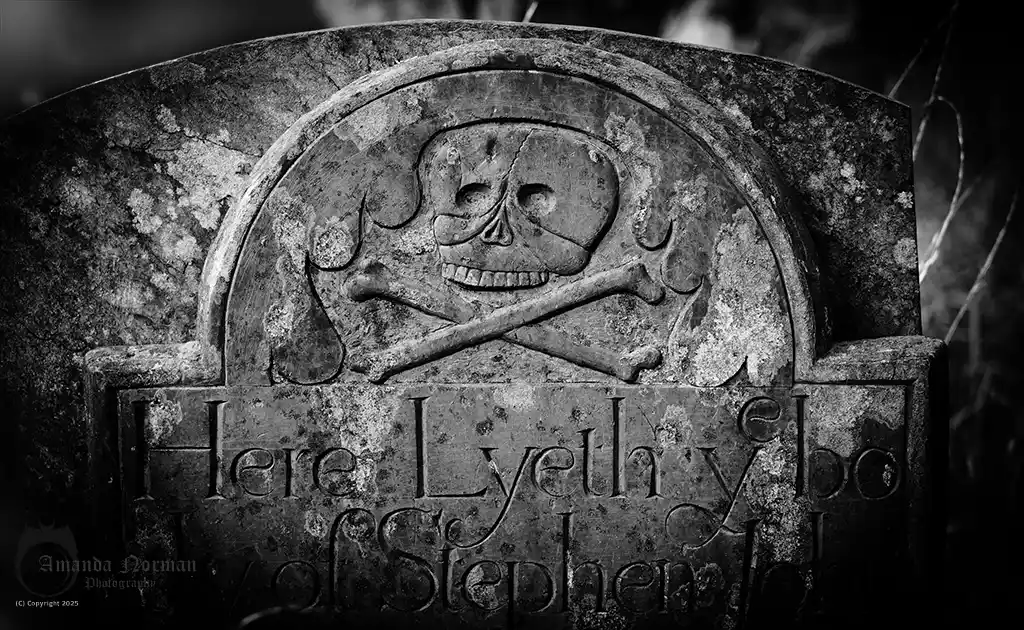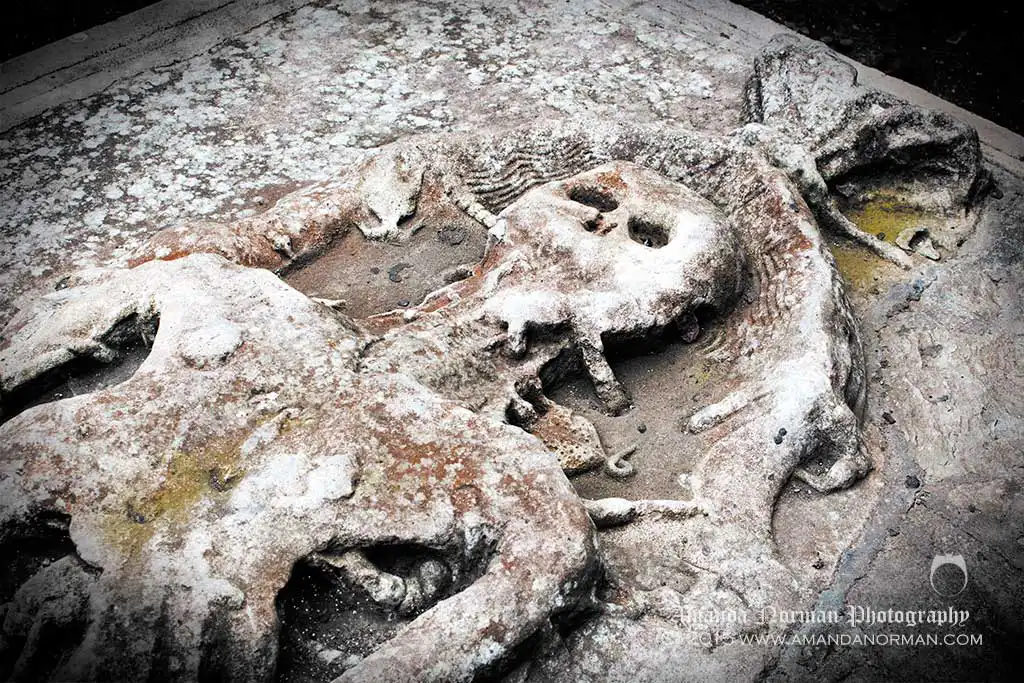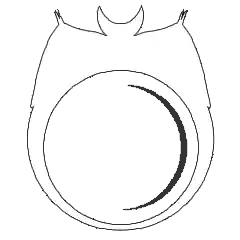Cemetery death heads, is my look at the changing fashion of a skull and crossbones in funeral art. Therefore, if you wonder why someone would like a skull and crossbones on their headstone, then look no further. But first, let us begin with the classic skull and crossbones that most of us are familiar with.

This skull and crossbones is a modern death head symbol that we are all familiar with. Moreover, it is a warning for poisonous substances, which is classified in the European 2008 Classification, Labelling and Packaging Regulations. Can you tell that I used to be a Health and Safety, Compliance Manager?
But, what are cemetery death heads I hear you asking?
Cemetery Death Heads

The above headstone showcases two fine examples. You will find this one in St. Cuthbert’s graveyard in Edinburgh.
The cemetery death heads we see today on headstones are common ‘Memento Mori‘ symbols from the 16th to 17th centuries. They warn us that no matter what our status is in life, we are all the same in death. In addition, live life for today as death is always lurking in the form of plagues or disease.
Of course, death heads are not always featuring two crossed femurs (known as the crossbones), behind or below the skull. Sometimes, you may only see one femur such as the example above. Also, there are skulls gnawing on femurs of which, I am yet to see.
The skull or head, represents death and is influenced by the ossuary’s or charnel houses of the early centuries.
An ossuary is a building containing lots of skulls and bones, and was used when burial space was scarce. Bodies would be buried for a number of years in order to fully decompose. Following decomposition, the skeletal remains were placed into a charnel house or ossuary.

Firstly, the earliest examples of skull and crossbones feature a crude skull with femurs crossing. In addition, the fashion of this type of cemetery death head, depended on the skill of the craftsman.
Fashion and religious beliefs also dictate such imagery and sources of reference include wood carvings, architectural motifs, plaster work, books including the Bible and the customers requests.
A fantastic place for finding cemetery death heads is in Edinburgh and also Northumberland. Furthermore, I have numerous photographs of stunning headstones that deserve their own post.
Changing Fashion of Cemetery Death Heads
Few headstones exist from before the reformation in the 16th Century. This is why I especially love visiting Edinburgh and Northumberland. I am planning on exploring more of Scotland in the future. That said however, there are some exceptional cadavers in Ireland. Although rare, these date to the 14th and 15th centuries and if you are a taphophile like me, you need to see them. Of course, the wealthiest in society could easily afford such a monumental display.

During the 16th and 17th centuries, the winged skull, the skull and crossbones and the winged cherub head adorned lots of headstones. The wings represent the ascension of the soul into Heaven or regeneration of the soul.

The Winged Head and the Soul Effigy
During the Regency period, the skull and crossbones fell out of fashion. Replacing the skull with a softer image of a cherub’s face was a lot more pleasing on the eye. Also, replacing the femurs with wings gave the overall death head a softer feel. Wings are representing the souls ascension to heaven. We refer to these as winged heads and in America, they call it a ‘soul effigy‘. [Ref: City of Boston – Iconography of gravestones]
It also relays an important message that those who find grace, might win Heaven. In England, the cherubs face is similar to the face of the Renaissance putti, which is child like.

Referring to the image of the twin cherubs above, we can see that foliage is now replacing the wings.
The Neoclassical period in Europe for visual arts began c. 1760. It was highly influenced by the arts of Rome and Ancient Greece. This period also coincided with the 18th century, Age of Enlightenment. This was an intellectual and philosophical movement that dominated the world of ideas in Europe. Many art students ventured on a grand tour of Europe and returned home from Italy with newly discovered Greco-Roman ideals.
Summarising Cemetery Death Heads
Since COVID-19 struck so many lives, the message these cemetery death heads portray is surprisingly, still relevant.
In my opinion, I believe it is more relevant now than it has ever been. This is because, a lot of us, including myself, take life for granted. We take medical advancement for granted and we never believe that the plague or flu can take so many lives. Well, we certainly had a wake-up call didn’t we?
Life has changed dramatically!
Conspiracy theories are rife and war is present. So much destruction that shows life is fleeting.
Moreover, we need to be living life to the full, each and every day we are able to. The decline of our mental health is worrying and many people are not aware how to maintain balance of mind, body, and soul.
As a spiritual person, I have incorporated the practicing of mindfulness and gratitude into my daily life. This is how I achieve balance as I am fully in the present moment. I am living life by using my senses, fully aware of what is happening around me. At one time however, I was solely stuck in my head! The present didn’t exist as I was too busy ruminating about my past or catastrophising about my future. If you are intrigued, visit my Gemstone and Tarot blog and begin your spiritual journey today.
